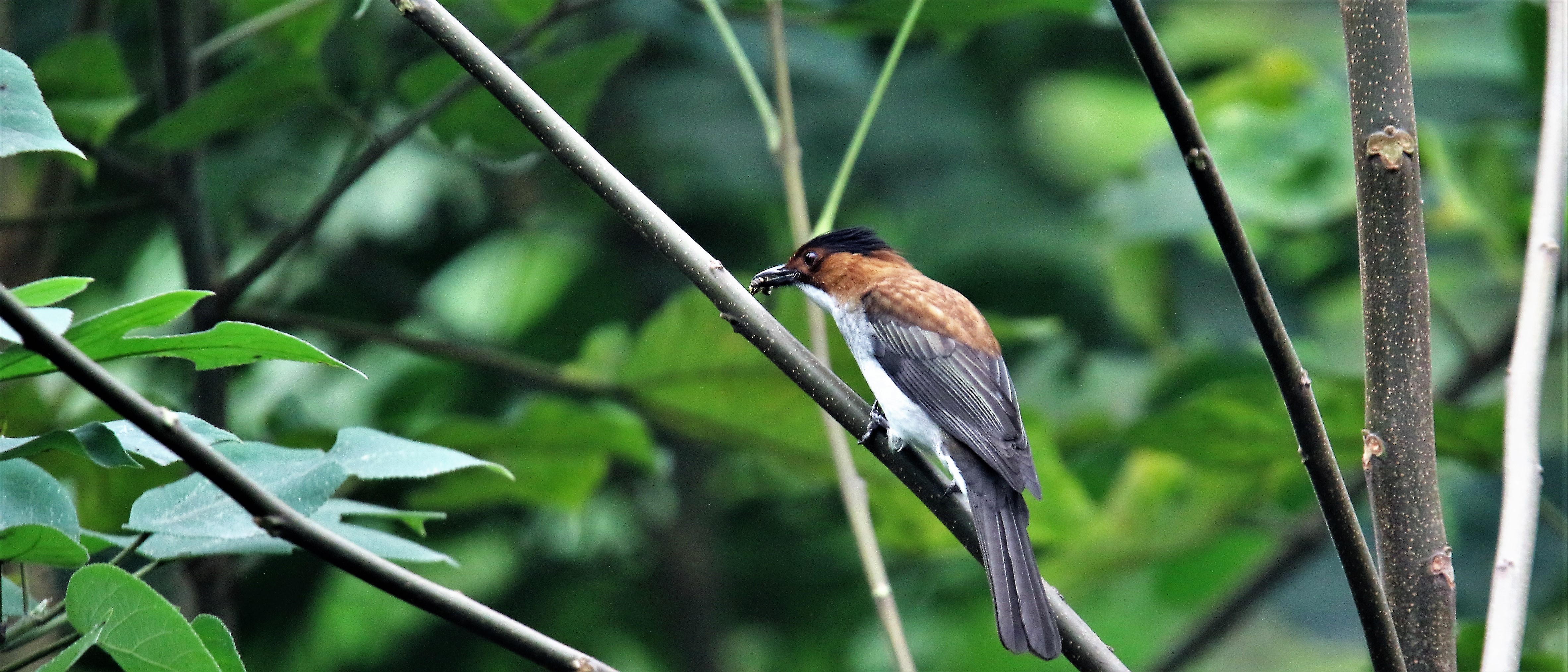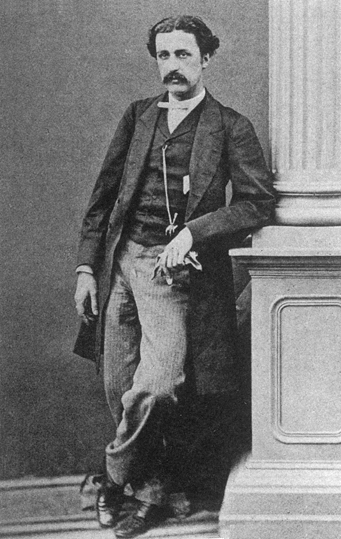|
Chestnut Bulbul
The chestnut bulbul or chestnut-backed bulbul (''Hemixos castanonotus'') is a songbird in the bulbul family, Pycnonotidae. The species was first described by Robert Swinhoe in 1870. It is found in southern China and northern Vietnam. Its natural habitat is subtropical or tropical moist lowland forests; it primarily resides in the canopy. Diet It is an omnivore. Taxonomy and systematics Formerly, some authorities classified the chestnut bulbul in the genus '' Hypsipetes'' and also as a subspecies of the ashy bulbul. Subspecies Two subspecies are currently recognized: * ''H. c. canipennis'' - Seebohm, 1890: Found in southern China and north-eastern Vietnam * ''H. c. castanonotus'' - R. Swinhoe, 1870: Found in northern Vietnam and on Hainan Hainan is an island provinces of China, province and the southernmost province of China. It consists of the eponymous Hainan Island and various smaller islands in the South China Sea under the province's administration. The name lite ... [...More Info...] [...Related Items...] OR: [Wikipedia] [Google] [Baidu] |
Robert Swinhoe
Robert Swinhoe FRS (1 September 1836 – 28 October 1877) was an English diplomat and naturalist who worked as a Consul in Qing-era Taiwan (then known to Westerners as Formosa). He catalogued many Southeast Asian birds, and several, such as Swinhoe's pheasant, are named after him. Biography Swinhoe was born in colonial-era Kolkata (then known as Calcutta) where his father, who came from a Northumberland family, was a lawyer. There is no clear record of the date of his arrival in England, but it is known he attended the University of London, and in 1854, joined the China consular corps. He was stationed to the remote port of Amoy, some 300 miles to the northeast of Hong Kong, in 1855. While at this port, he not only mastered the Chinese language (both official Mandarin and the local Amoy dialect), but also initiated a detailed and authoritative understanding of the ornithology of eastern China. In March 1856, Swinhoe made an "adventurous" visit to the camphor districts of no ... [...More Info...] [...Related Items...] OR: [Wikipedia] [Google] [Baidu] |
Hainan
Hainan is an island provinces of China, province and the southernmost province of China. It consists of the eponymous Hainan Island and various smaller islands in the South China Sea under the province's administration. The name literally means "South of the Sea". The province has a land area of , of which Hainan Island is and the rest is over 200 islands scattered across three archipelagos: Zhongsha Islands, Zhongsha, Xisha Islands, Xisha and Nansha Islands, Nansha. It was part of Guangdong from 1950 to 1988, after which it was made a province of its own and was designated as a special economic zones of China, special economic zone by Deng Xiaoping, as part of the Chinese economic reform program. The Han Han Chinese, Chinese population, who compose a majority of the population at 82%, speak a wide variety of languages including Standard Chinese, Hainanese, Hainam Min, Yue Chinese, Cantonese, Hakka Chinese, etc. Indigenous peoples such as the Hlai people, Hlai, a Kra–Dai l ... [...More Info...] [...Related Items...] OR: [Wikipedia] [Google] [Baidu] |
Birds Described In 1870
Birds are a group of warm-blooded vertebrates constituting the class Aves (), characterised by feathers, toothless beaked jaws, the laying of hard-shelled eggs, a high metabolic rate, a four-chambered heart, and a strong yet lightweight skeleton. Birds live worldwide and range in size from the bee hummingbird to the common ostrich. There are over 11,000 living species and they are split into 44 orders. More than half are passerine or "perching" birds. Birds have wings whose development varies according to species; the only known groups without wings are the extinct moa and elephant birds. Wings, which are modified forelimbs, gave birds the ability to fly, although further evolution has led to the loss of flight in some birds, including ratites, penguins, and diverse endemic island species. The digestive and respiratory systems of birds are also uniquely adapted for flight. Some bird species of aquatic environments, particularly seabirds and some waterbirds, have furth ... [...More Info...] [...Related Items...] OR: [Wikipedia] [Google] [Baidu] |
Hemixos
''Hemixos'' is a songbird genus in the bulbul family, Pycnonotidae. Taxonomy and systematics Established by Edward Blyth in 1845 for the newly discovered ashy bulbul (''H. flavala''),Gregory (2000) this genus contains four extant species. Some treatments merge the genus into ''Hypsipetes'', often together with the rest of the traditional "''Hypsipetes'' group" of bulbuls: ''Iole (genus), Iole'', ''Ixos'', ''Microscelis'' and ''Tricholestes''. But in this case, the closely related genera ''Alophoixus'' and ''Setornis'' would probably also have to be included, and as soon as the earliest described genus, ''Ixos'', is merged with another its name would apply. In fact, ''Hemixos'' is not particularly close to ''Hypsipetes'', and a merger is not well justified. mtDNA NADH dehydrogenase Protein subunit, subunits 2 and 3 and nDNA β-fibrinogen intron 7 DNA sequence, sequence data puts it closer to (but still well distant from) the streaked bulbul (''Ixos malaccensis''). But whether ... [...More Info...] [...Related Items...] OR: [Wikipedia] [Google] [Baidu] |
Henry Seebohm
Henry Seebohm (12 July 1832 – 26 November 1895) was an English steel manufacturer, and amateur ornithologist, oologist and traveller. Biography Henry was the oldest son of Benjamin Seebohm (1798–1871) who was a wool merchant at Horton Grange, Bradford. The family had moved to England from Bad Pyrmont in Germany. Henry's mother Estther Wheeler (1798–1864) was a granddaughter of William Tuke. The Seebohms were active in the Society of Friends and Henry schooled within the community in York. He worked initially in a grocery as an assistant but moved to Sheffield where he became a steel manufacturer. He married Maria, daughter of George John Healey, a merchant in Manchester on 19 January 1859. Natural history Henry became interested in natural history at school and continued to spend his spare time studying birds on his journeys. He travelled widely visiting Greece, Scandinavia, Turkey, and South Africa. His expeditions to the Yenisey tundra of Siberia were described in ... [...More Info...] [...Related Items...] OR: [Wikipedia] [Google] [Baidu] |
Songbird
A songbird is a bird belonging to the suborder Passeri of the perching birds (Passeriformes). Another name that is sometimes seen as the scientific or vernacular name is Oscines, from Latin ''oscen'', "songbird". The Passeriformes contains 5,000 or so speciesEdwards, Scott V. and John Harshman. 2013. Passeriformes. Perching Birds, Passerine Birds. Version 06 February 2013 (under construction). http://tolweb.org/Passeriformes/15868/2013.02.06 in The Tree of Life Web Project, http://tolweb.org/ ccessed 2017/12/11 found all over the world, in which the vocal organ typically is developed in such a way as to produce a diverse and elaborate bird song. Songbirds form one of the two major lineages of extant perching birds (~4,000 species), the other being the Tyranni (~1,000 species), which are most diverse in the Neotropics and absent from many parts of the world. The Tyranni have a simpler syrinx musculature, and while their vocalizations are often just as complex and striking as ... [...More Info...] [...Related Items...] OR: [Wikipedia] [Google] [Baidu] |
Ashy Bulbul
The ashy bulbul (''Hemixos flavala'') is a species of songbird in the bulbul family, Pycnonotidae. It is found on the Indian subcontinent and in Southeast Asia. Its natural habitats are subtropical or tropical moist lowland forest and subtropical or tropical moist montane forest. Taxonomy and systematics Formerly, some authorities classified the ashy bulbul in the genera '' Hypsipetes'' and '' Microscelis''. Subspecies Five subspecies are currently recognized: * ''H. f. flavala'' - Blyth, 1845: Found in the eastern Himalayas, north-eastern Bangladesh, north-western Myanmar and southern China * ''H. f. hildebrandi'' - Hume, 1874: Found in eastern Myanmar and north-western Thailand * ''H. f. davisoni'' - Hume, 1877: Found in south-eastern Myanmar and south-western Thailand * ''H. f. bourdellei'' - Delacour, 1926: Found in southern China, eastern Thailand, northern and central Laos * ''H. f. remotus'' - ( Deignan, 1957): Found in southern Indochina Gallery File:Ashy Bulbul fro ... [...More Info...] [...Related Items...] OR: [Wikipedia] [Google] [Baidu] |
Hypsipetes
__NOTOC__ ''Hypsipetes'' is a genus of bulbuls, songbirds in the family Pycnonotidae. Most of its species occur in tropical forests around the Indian Ocean. But while the genus is quite diverse in the Madagascar region at the western end of its range it does not reach the African mainland. Most ''Hypsipetes'' bulbuls are dark greyish birds with orange or red bills and feet. The feathers on top of the head are slightly elongated and usually black, and can be erected to form a short and wispy crest. Taxonomy and systematics The genus ''Hypsipetes'' was introduced in 1831 by the Irish zoologist Nicholas Aylward Vigors with ''Hypsipetes psaroides'' as the type species. This taxon is now a subspecies of the black bulbul ''Hypsipetes leucocephalus psaroides''. The genus name combines the Ancient Greek ''hupsi'' meaning "high" with ''petēs'' meaning "-flyer". Species The genus contains 26 species: * Nicobar bulbul, ''Hypsipetes nicobariensis'' (formerly placed in ''Ixos'') * Philip ... [...More Info...] [...Related Items...] OR: [Wikipedia] [Google] [Baidu] |





